calsfoundation@cals.org
Corning (Clay County)
County Seat
| Latitude and Longitude: | 36º24’28″N 090º34’47″W |
| Elevation: | 292 feet |
| Area: | 3.67 square miles (2020 Census) |
| Population: | 3,227 (2020 Census) |
| Incorporation date: | August 6, 1877 |
Historical Population as per the U.S. Census:
|
1810 |
1820 |
1830 |
1840 |
1850 |
1860 |
1870 |
1880 |
1890 |
1900 |
|
– |
– |
– |
– |
– |
– |
– |
393 |
584 |
1,041 |
|
1910 |
1920 |
1930 |
1940 |
1950 |
1960 |
1970 |
1980 |
1990 |
2000 |
|
1,439 |
1,564 |
1,550 |
1,619 |
2,045 |
2,192 |
2,705 |
3,650 |
3,323 |
3,679 |
|
2010 |
2020 |
|
|
|
|
|
|
|
|
|
3,377 |
3,227 |
|
|
|
|
|
|
|
|
Corning, incorporated in August 1877, was the first of Clay County‘s two seats (Piggott is the other). Corning is the judicial seat for the county’s Western District and is the commercial and educational center of western Clay County.
There is little record of western Clay County’s earliest settlers. The land was heavily forested and cut by many rivers and streams. Swamps covered large parts of the area, making transportation and farming difficult. The state sold most of the land as swamp and overflowed lands. Land speculators and timbering interests bought large tracts. The many rivers aided in the movement of cut timber to mills in other towns. In the 1850s, the Cairo and Fulton Railroad secured the right to build a railroad through the area, but the Civil War postponed construction (though it had no other appreciable impact on the area, which was lightly populated at the time).
Reconstruction through the Gilded Age
In late 1872, the Cairo and Fulton—building north from Little Rock (Pulaski County)—met the Iron Mountain Railroad—building south from St. Louis, Missouri—at the Arkansas-Missouri border. On February 5, 1873, the first southbound train from St. Louis to Little Rock arrived with mail for the newly named Corning. The identity of the town’s namesake is not clear. Writing in 1932, Charles V. Beloate, a town pioneer, identifies Corning as “H. K. Corning, an official of the old St. Louis, Iron Mountain and Southern Railroad Company.” An April 1955 letter from the Missouri Pacific Railroad identifies Corning as “H. D. Corning, an engineer employed by the construction firm of Mandeville and Allen—which built the railroad through that section of Arkansas.” Writing in 1933, Robert Webb identifies him as a wealthy friend of railroad magnate Jay Gould.
As a railroad town and a county seat, the town grew rapidly and had almost 400 people in the 1880 Census. Because the transportation corridor ran north-south, many residents arrived on the railroad from Ohio, Indiana, Illinois, and Missouri. The vast hardwood forests yielded oak, cypress, and gum, and the railroad made it possible to ship wood products and lumber.
Corning’s location in the western part of the county made it inconvenient for citizens in the eastern part to do business at the courthouse. The trip required crossing the swamps around the Black River and the Cache River bottoms, which were impassable for many months of the year. On June 30, 1874, an election determined that the county seat should be moved to Boydsville. Corning residents strongly resisted. The question was put to voters again in May 1877. The results were overwhelming for moving the county seat. The court again declared Boydsville the winner, and the courts and records were moved. This solved the problem for eastern Clay County, but the residents of western Clay County found that the swamps were just as much a hindrance to them. On February 23, 1881, the legislature approved an act providing that the county be divided into two judicial districts—Eastern and Western. Corning had its courthouse, although it was the “junior partner” because the Western District offices were to be filled by the deputies.
The period from 1877 to 1882 was marked by widespread violence by the Ku Klux Klan (KKK). Because Corning was established primarily by Northerners after the Civil War, the western part of the county had no ex-slaves. That did not stop the Klan. Its members roamed over southeast Missouri and northeast Arkansas. One of the leaders, Luther Bent Taylor, was finally arrested. Charged with the murder of fellow Klansman Riley Black, Taylor was convicted and hanged on April 21, 1882, in Corning. Taylor also was believed to have murdered Justice of the Peace John B. Kilgore in 1877. The other Klan trial was that of Lafayette Melton. Convicted of the 1881 murder of Frank Hale, Melton was hanged on January 30, 1884, in Corning. In addition, in 1878, a man named Buck Jenkins was lynched in Corning for the theft of horses.
Religious services began with the earliest settlers. From 1881, all groups used the new courthouse. In 1886, the Methodist Episcopal Church, South, built the first church building. Baptist and Christian (Disciples of Christ) churches followed. Social life was centered on churches, lodges, and women’s organizations, and the 1890s brought banking, telephones, and electricity.
Early Twentieth Century through Modern Era
By 1910, the lumber business was on its way out in western Clay County, making way for increased farming. At the same time, the state program to drain swamplands reached northeast Arkansas. Paid for by state money and local ditch taxes, this program looked like an agricultural bonanza, but the end of World War I coincided with falling farm prices, falling land values, and rising land and ditch taxes.
Slowly, the rudiments of a road network emerged. In 1933, U.S. 67 became a paved road connecting St. Louis and Little Rock, and other roads extended east and west. No longer was the railroad the only transportation. The Depression, which gripped America in the 1930s, actually started in the early 1920s for agricultural America. Bankruptcies and foreclosures were common. The state established a fish hatchery in Corning in 1938, and the federal Rural Electrification Administration began extending electricity to the county’s remote areas in 1939.
World War II had little effect on Corning’s economy, but the 1950s and 1960s saw Corning’s first success in attracting light industry. Local agriculture got a boost with the construction of a large grain dryer by the railroad tracks. Downtown business thrived, and a sense of pride developed in the town. Civic organizations sprang up, and social clubs were established or expanded.
More recent developments have not been in the same vein. Factory owners, finding cheaper labor in other countries, have closed most of the industrial concerns in Corning. Continuing the trend away from the railroad toward truck and automobile transportation, the town’s commercial center has shifted from the old downtown area along the railroad to the highway corridor.
Corning has supported a newspaper since its earliest days. The old Scalpel of Pocahontas (Randolph County) was brought over in 1873 as the Courier but moved away about 1875. In 1880, it moved back to Corning, where it has been published since then as the weekly Clay County Courier.
Education
With the improved road system, school consolidation became the order of the day in the 1920s, and many of the smaller school districts were combined. Corning had the only high school in that part of the county, and students from outlying communities attended. Students from eastern Randolph County schools were added in the twenty-first century.
Subscription schools were available from the mid-1870s. The first public school was established in 1877. Captain Charles R. Beloate, father of Charles V. Beloate, aided in getting enough land from the railroad company for the school grounds, and a schoolhouse was constructed. At Beloate’s invitation, Goldsmith B. Oliver was hired as the principal. In 1901, Corning saw its first class of eighth-graders complete the program. This was such a success that a three-year high school program immediately was organized, and the first class of four students graduated in 1904. In 1913, the three-year program was extended to four years. In 1929, the North Central Association of Colleges and Secondary Schools accredited the Corning schools.
Industry
The first major industry derived from the predominant natural resource—timber. Stave mills arrived with the railroad in the early 1870s. By the mid-1890s, they lined the tracks, turning out barrel staves and heads, railroad ties, and lumber. Sawmills dotted the forests. By World War I, timber-based industries were on the way out. The easy timber had been cut, and the lumber men moved their sawmills to other forests. Only one major lumber company remains. The J. W. Black Lumber Company, established in the mid-1890s, has maintained its business through careful management and reforestation programs.
Agriculture began to change from subsistence farming to a business when, in about 1910, the state began the program to drain and ditch the swamps. The program continued into the 1950s. Cotton was the first major cash crop. Taking advantage of flat land and abundant water, rice farming arrived about 1916, and soybeans had supplanted cotton by the mid-1950s. Rice and soybeans form the backbone of the agricultural economy.
“Pearl” button cutting was a short-lived industry in the 1920s. Freshwater mussels were dredged from nearby waters, and “pearl” buttons were cut from their shells. The combination of a declining mussel population and the use of other raw material for buttons spelled the end of this endeavor.
In the late 1950s, the Clayton Shoe Company was established. Other light industrial firms came, but most closed their doors in Corning in the late 1990s.
Attractions
From modest beginnings in 1944, the Homecoming and Independence Day Celebration in Wynn Park has become one of the ties that bind former residents to their hometown. The celebration is sponsored by the Corning Chamber of Commerce and run by local residents for the benefit of civic organizations such as the Corning Library, the Girl Scouts and the Boy Scouts, and the Corning Cemetery. This event is a popular time for school reunions, and during election years, many political candidates campaign at Wynn Park.
On the fourth Saturday in October, Corning sponsors a Harvest Festival with craft booths and exhibitions of antique farm equipment to celebrate its agricultural history .
The county’s only lakes are around Corning. Along with the Black, Cache, and Current rivers and cutover rice and soybean fields, the area becomes home to a large number of migratory waterfowl each winter, attracting many duck hunters.
For additional information:
Barnes, Cathy. Life & Times from the Clay County Courier Newspaper. 17 vols. covering the years of 1893 to 1925. Conway, AR: Arkansas Research, Inc.
Biographical & Historical Memoirs of Northeast Arkansas. Greenville, SC: Southern Historical Press, 2002.
Corning, 1873–1973. Corning, AR: Clay County Courier, 1973.
Corning, Arkansas. http://www.corningar.gov/ (accessed July 19, 2023).
Oliver, James M. Corning Cavalcade Centennial Edition. Edited by Frank Cochran. N.p.: 1997.
Webb, Robert T., Bruce Brown, and Patsy Truscott, compilers. History and Traditions of Clay County. Piggott, AR: Webb, Truscott, and Brown, 1933.
Wilson, David. I Grew Up in a Small Town. N.p.: 2022.
Franklin H. Cochran
Madison, Alabama
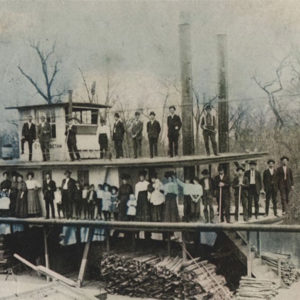 Choctaw Steamboat
Choctaw Steamboat 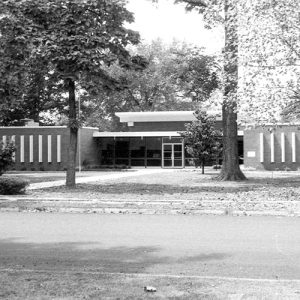 Clay County Courthouse
Clay County Courthouse  Clay County Jail
Clay County Jail 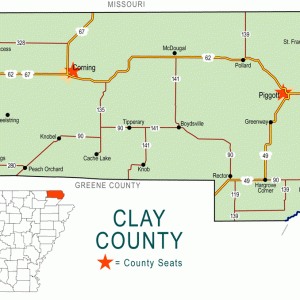 Clay County Map
Clay County Map 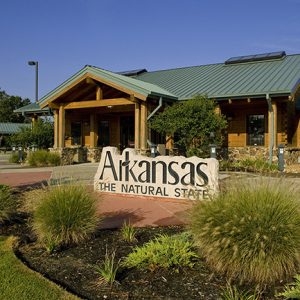 Corning Welcome Center
Corning Welcome Center  Corning Church
Corning Church 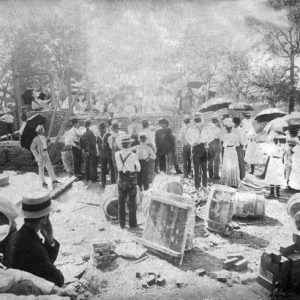 Corning Courthouse Cornerstone Ceremony
Corning Courthouse Cornerstone Ceremony 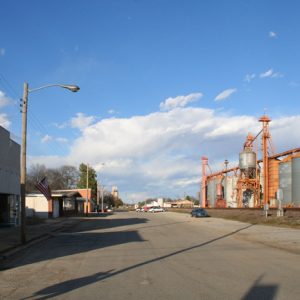 Corning Grain Silos
Corning Grain Silos  Corning Store
Corning Store 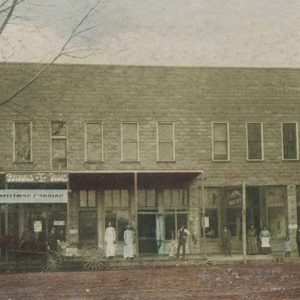 Corning Street Scene
Corning Street Scene 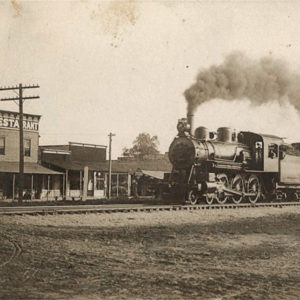 Corning Train
Corning Train 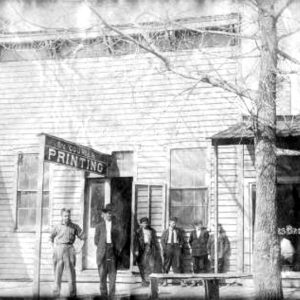 Courier Printing
Courier Printing 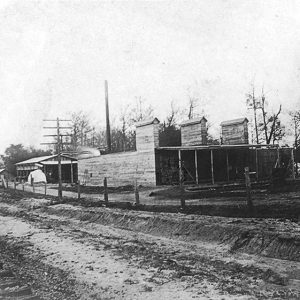 Frisco Stave Company
Frisco Stave Company 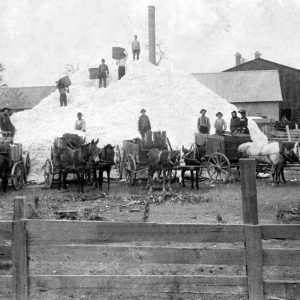 Sheeks-Stephens Gin
Sheeks-Stephens Gin 




Greatly appreciate the historical information. Now that Corning is basically an agricultural community, the memories are still there.